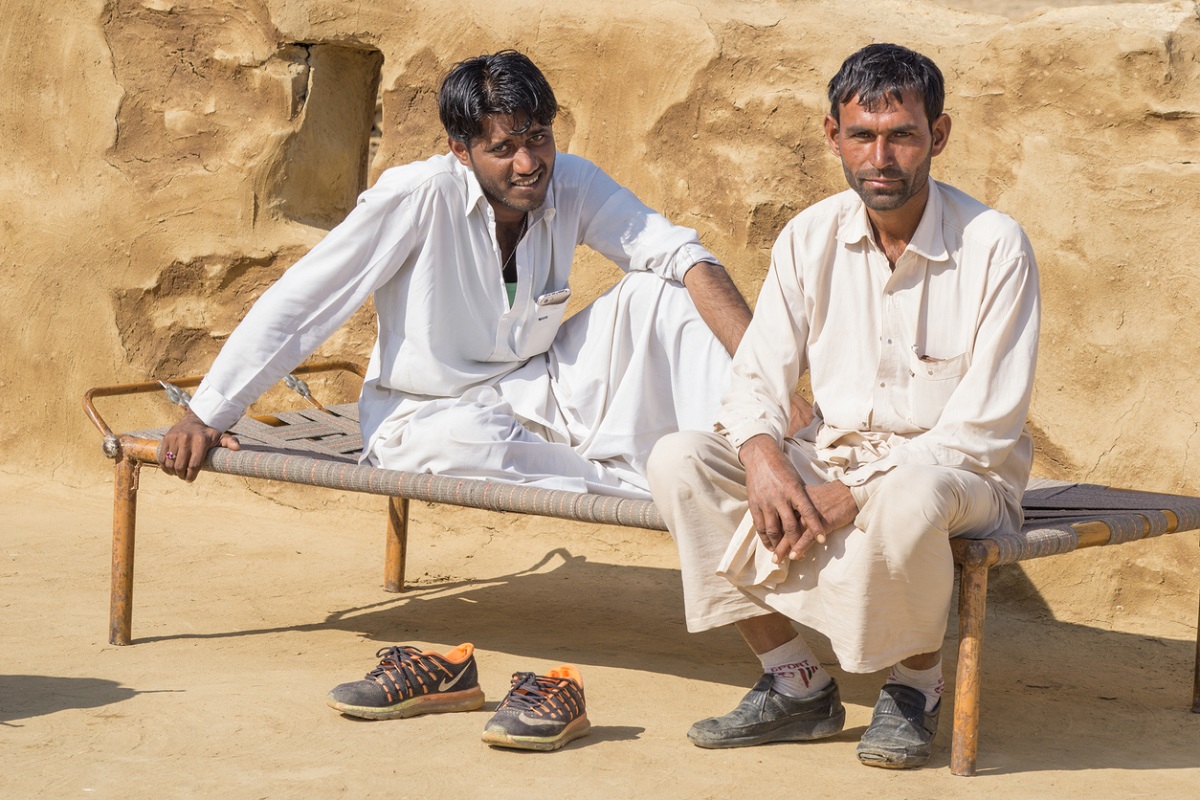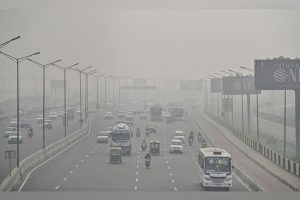In times to come, the competitive populism of our Central and State Governments would be rated as the single most important factor that had kept us from realising our true potential. The mad rush to take and grant reservations has already divided our country on caste lines. Another and probably more dangerous species of populism ~ that of granting doles ~ is threatening to disrupt the fragile equilibrium of our finances.
With the Lok Sabha elections approaching, cash handouts are raining like manna from heaven. After the Central Government promised a pay-out of Rs 500 per month to poor farmers under the PM-KISAN, the Madhya Pradesh government formulated a scheme to give Rs 4,000 per month to every unemployed person, the Rajasthan government will give Rs 3,500 per month to each unemployed woman and Rs 3,000 per month to every unemployed young man.
Advertisement
The Centre and the States have tried to emulate Telangana, which gives farmers Rs.10,000 every year for every acre of agricultural land. Joining the populist bandwagon, the Andhra agriculture minister grandly declared: “The Centre has announced financial assistance of Rs 6,000 to about 55 lakh families in the State; we have hiked it to Rs10,000. Whereas the Centre has set a ceiling of five acres, all families will be covered.” Like other States, the largesse appears unaffordable for Andhra, which according to a recently released White Paper on State finances has a public debt of Rs 2,25,234 crore and has already spent Rs.22,000 crore on crop loan waivers.
But, then, financial prudence is not the hallmark of politicians, at least not in an election year. The Centre, which ought to have set a better example, has provided Rs 75,000 crore in the next financial year for PMKISAN; wishfully expecting a 13.5 per cent rise in tax collection, without proposing any new taxation measures. Budget estimates for the current financial year show a shortfall in GST collections to the tune of Rs 1 lakh crore, putting another question mark on the projected revenues of the Government in the coming financial year.
At the ground level, the PMKISAN project may be difficult to implement fully because land records have not been digitised in a number of States. In other States also, the rollout of PMKISAN is proving problematic because phone numbers and bank accounts of the beneficiaries have not yet been linked. The imminent elections have left little time to the administrative machinery to complete these preparatory tasks.
Subsidies to farmers is neither a new concept nor necessarily a bad one. The European Union (EU) has given cash subsidies to farmers since 2003 under the Common Agricultural Policy. However, in contrast to India where 47 per cent of the population depends on farming, which provides 15 per cent of the GDP, only 5.4 per cent of EU’s population works on farms, which is responsible for 1.6 per cent of EU’s GDP. While we spend 10 per cent of our budget on farming, fully 39 per cent of the EU budget goes to farming, which sustains agricultural subsidies and a host of policies to keep farmers happy. The short point is that given our large population and limited resources, cash subsidies to farmers at current levels are not sustainable.
We also have to remember that cash subsidies announced in this year’s Central and State budgets are in addition to more than one hundred Central schemes and thousands of State schemes. The annual expenditure on the Central schemes alone exceeds Rs. 12 lakh crore. It can be no one’s case that target groups have benefited to the full extent of the humongous amount of money spent on them, year after year. Rather, there have been countless ~ and proved ~ instances of diversion of development funds to the pockets of bureaucrats and politicians.
The Fiscal Responsibility and Budget Management (FRBM) Act was passed in 2003 with the aim of institutionalizing financial discipline and reducing India’s fiscal deficit. The main objective of the Act was to eliminate revenue deficit and to bring down the fiscal deficit to 3 per cent of the GDP by March 2008. Sadly, none of the objectives of the FRBM Act have been achieved even by March 2019; the projected revenue deficit is Rs 4.70 lakh crore while the fiscal deficit for the current financial year has been projected optimistically at 3.3 per cent, which by all indications is likely to be exceeded.
With all political parties being perpetually in election mode, it is virtually impossible to avoid profligacy. In addition to handouts to their committed voters, once elected to power, politicians spend huge amounts on their pet foibles. Mayawati, as Chief Minister of UP, spent Rs 11,000 crore on her own statues and that of elephants. The present Government has spent even more on assorted statues and cow welfare. In what may be an interesting development, the Supreme Court, which had earlier found nothing wrong in Mayawati’s statue-building spree, is now questioning her expenditure on statues.
The taxpaying public feels cheated at this huge waste of funds. Many tax evaders would rather spend on charity than pay tax because almost everyone feels that the tax paid by him/her goes towards unworthy causes or to line the pockets of politicians and bureaucrats.
With more than one-fifth of our countrymen living below the poverty line and an equal number only slightly above, welfare expenditure is bound to form a major part of Government spending. However, the manner in which welfare schemes are conceptualised, implemented and evaluated, leaves much to be desired. For example, the Pradhan Mantri Fasal Bima Yojana (PMFBY), a flagship scheme of the Government was designed to provide lowcost crop insurance to farmers but has ended up benefiting private insurance companies, which have earned more than Rs.16,000 crore from crop insurance. Significantly, at least 85 lakh farmers have opted out of PMFBY.
The case of Gujarat State Land Development Corporation, which was formed to provide technical and financial help to farmers in constructing farm ponds, is illustrative of the rampant and endemic corruption in the execution of Government schemes. An Anti-Corruption Bureau raid on GSLDC’s office in 2018 found huge amounts of cash in the office drawers of GSLDC’s top officials. Further probe revealed that GSLDC had disbursed large amounts of money for the construction of over 160 ponds, but the ponds were dug only on paper while no work had been done on the ground. The Gujarat Government’s response was to shut down the GSLDC, probably to prevent more skeletons from tumbling out.
The rot in GSLDC was probably more than that in other welfare schemes but almost all schemes suffer from huge leakages because welfare schemes are generally continued for years without any real output measurement. Even if a scheme fails, unpleasant facts rarely become public because of vested interests and a bureaucratic system in which implementers double up as evaluators.
A consensus, rather than competition, between the Centre and States would ensure dovetailing of welfare schemes giving more bang for the buck. A realistic evaluation of existing welfare schemes is also required, so that modifications can be made wherever required and non-productive schemes can be axed. Most importantly, evaluation of the output of all Government schemes should be done by professionals or by a set of bureaucrats, different from those who had implemented that particular scheme.
As the Gujarat Chief Minister, Narendra Modi had launched Kanya Kelavani, a scheme for education of the girl child which drastically reduced the school drop-out rate for girls and improved the quality of education.
The striking feature of this scheme was that senior bureaucrats from all departments were sent to far-flung places to evaluate schools and the standard of education provided by them. The quality of education in village schools improved noticeably. A similar model to evaluate ongoing projects is imperative.
With an increasing chorus in favour of direct cash transfers, another dilemma confronts our planners: What should be the limit of welfare expenditure and what proportion of Government expenditure should go to cash transfers and what proportion should go to welfare schemes?
And, can such limits be given statutory backing, like the FRBM Act? Rhetorically speaking, all eligible citizens could be provided with an assured minimum income (Universal Basic Income) in lieu of existing welfare schemes. This may not be a viable proposition because Universal Basic Income is still an untried concept and to unleash it on 25 crore Indians would be downright foolhardy. At the same time, a complete review of all welfare expenditure is necessary to keep Government finances healthy. In any case, for the real welfare of the poor and to avoid waste of the hard-earned money of taxpayers, the Central Government and all State Governments must abjure competitive populism and turn to cooperative federalism.
(The writer is a retired Principal Chief Commissioner of Income-Tax)











